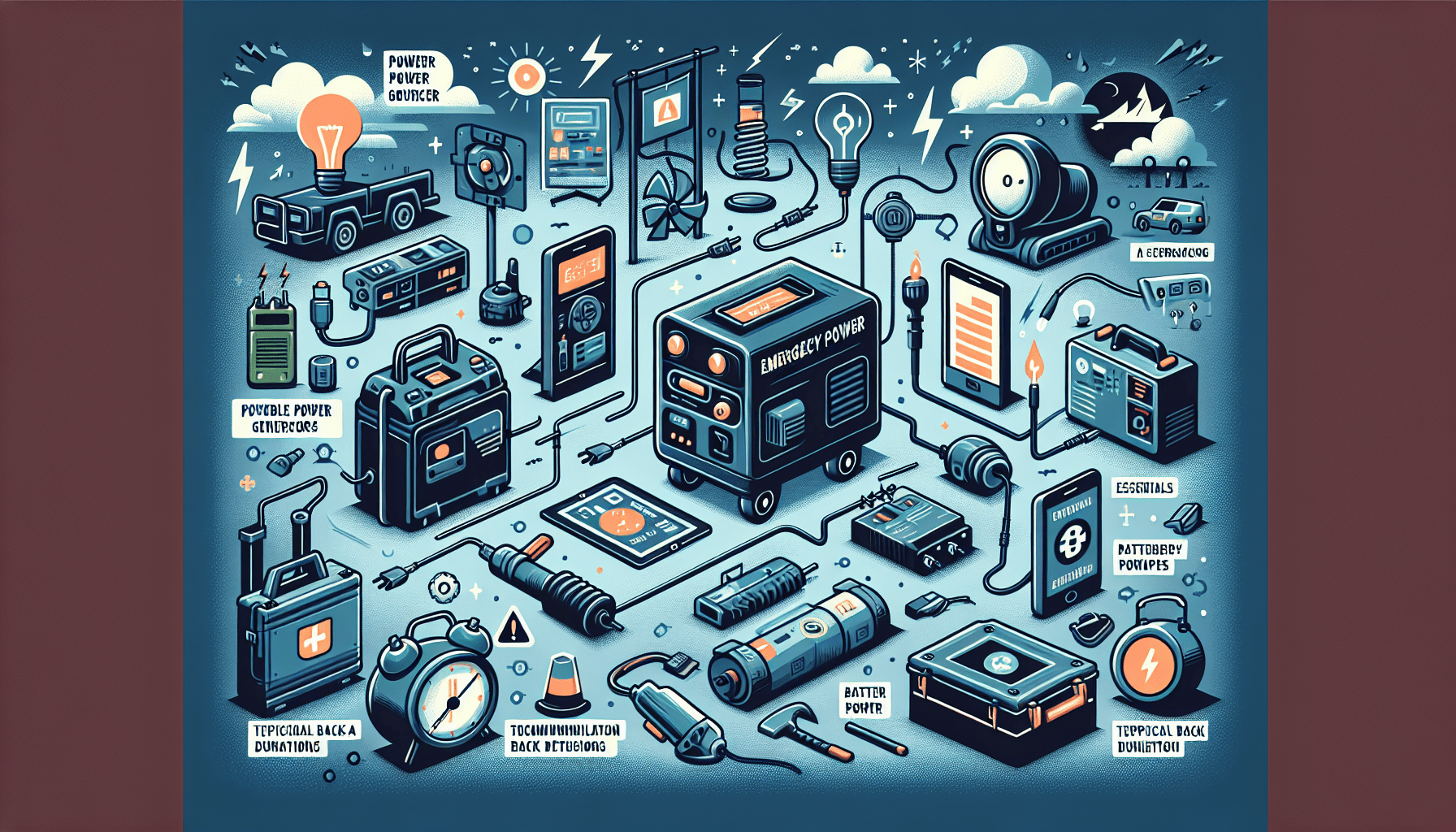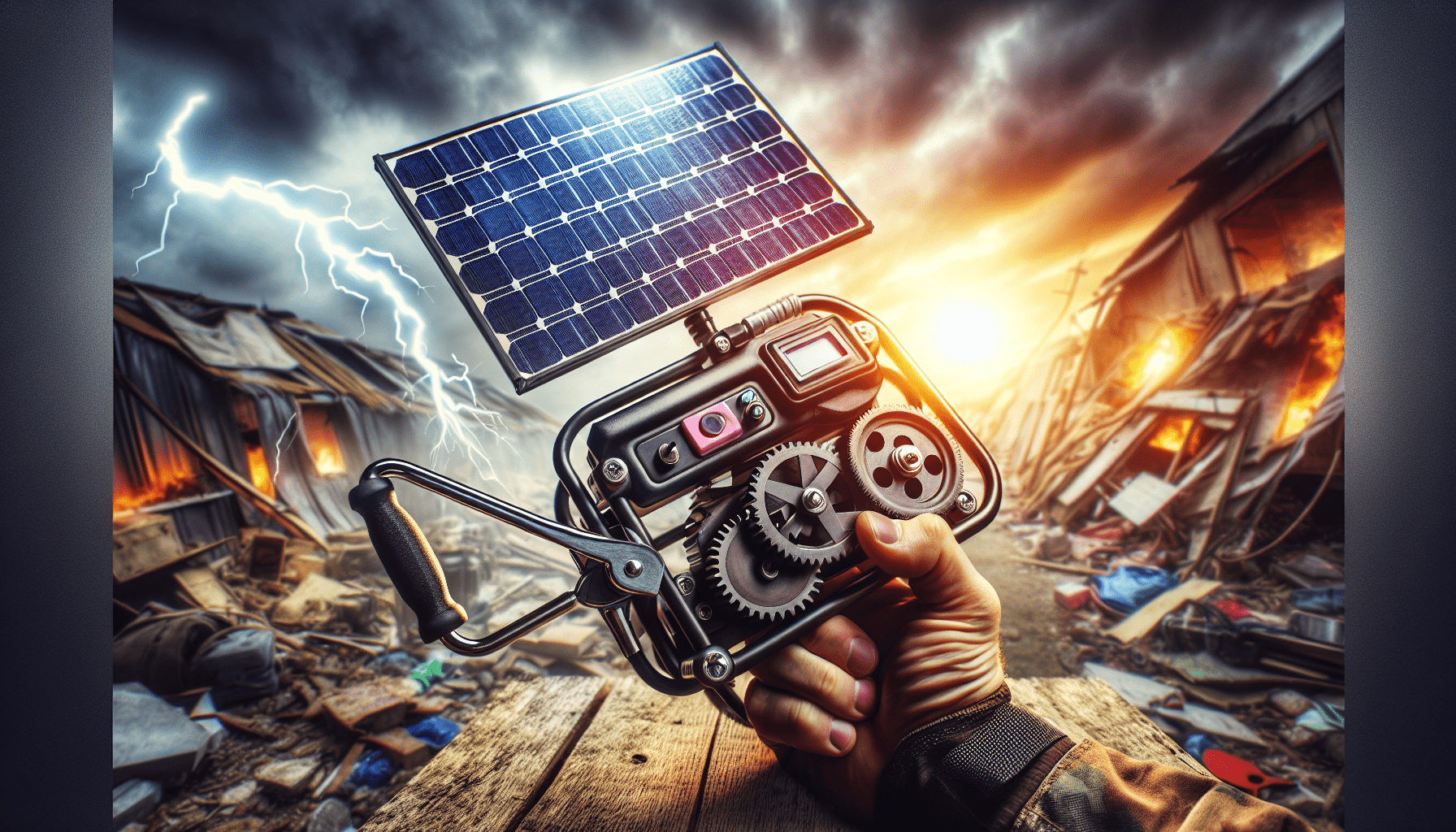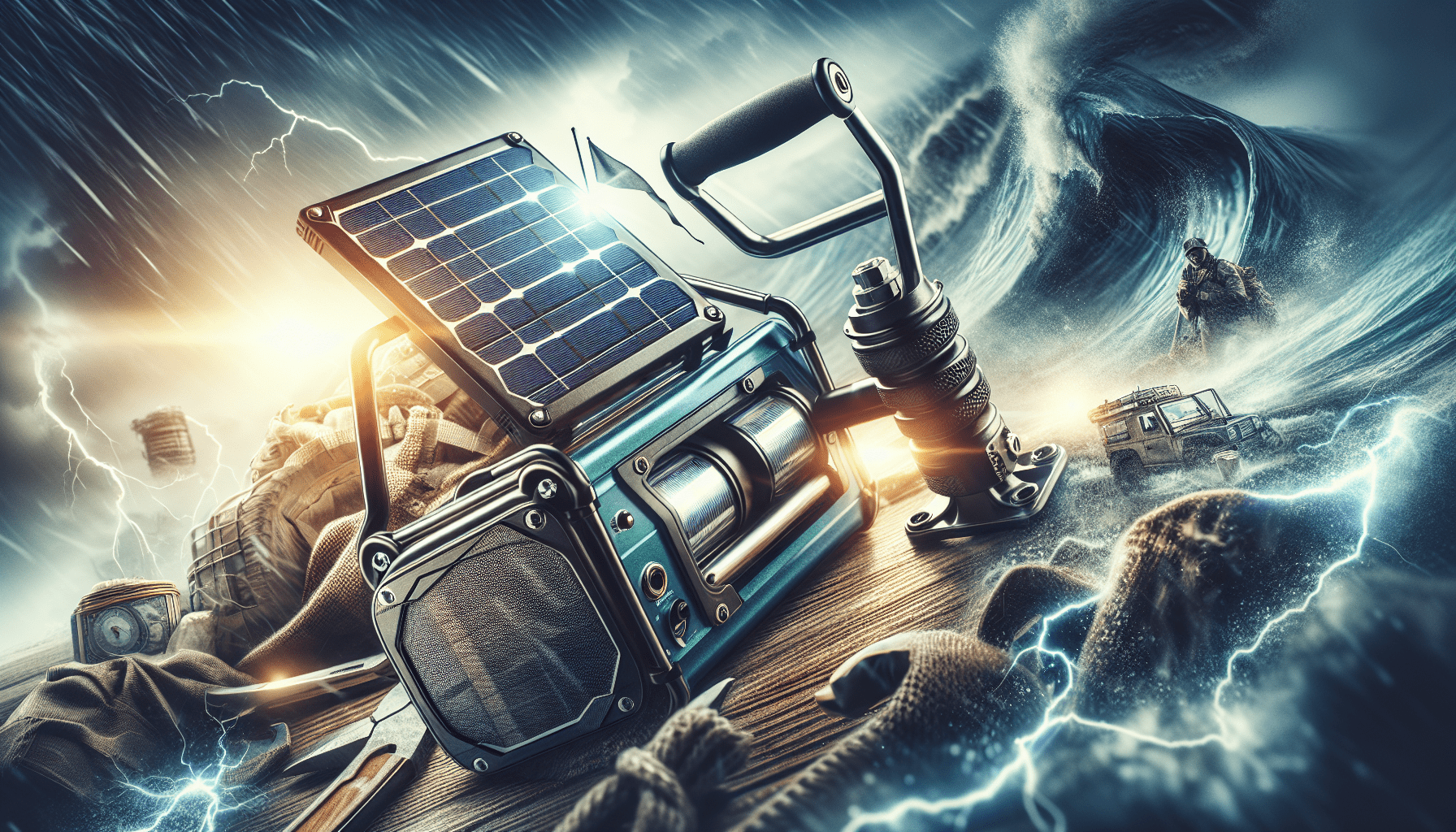In times of emergency or during outdoor adventures, having a reliable power source can make a world of difference. From power outages in urban areas to off-grid living situations in the wild, being prepared with the right emergency power sources can ensure your safety and comfort. In this article, we will explore some of the top options for emergency power sources that are compact, efficient, and versatile. Whether you’re a seasoned camper or simply looking for peace of mind during unexpected circumstances, these power sources will be your lifesavers. So let’s dive into the world of top emergency power sources for survival.

Solar Power Generators
Portable Solar Generators
Portable solar generators are a great option for individuals who are constantly on the move or need reliable power during outdoor activities. These compact and lightweight generators harness the power of the sun to provide electricity whenever and wherever you need it. With portable solar generators, you can easily charge your devices, run small appliances, or even power your camping gear. These generators typically come with built-in solar panels and battery storage, allowing you to capture and store solar energy during the day for use at night or in cloudy conditions.
Fixed Solar Power Systems
Fixed solar power systems are designed for residential or commercial use and provide a long-term, sustainable source of electricity. These systems consist of multiple solar panels that are installed on rooftops or in large open spaces, such as solar farms. The panels capture sunlight and convert it into usable electricity through the photovoltaic effect. Fixed solar power systems are connected to the electrical grid, allowing excess power to be sent back to the grid for credits or used during periods of low solar production. With advances in technology, fixed solar power systems have become more efficient and affordable, making them an increasingly popular choice for homeowners and businesses alike.

Backup Power Banks
High Capacity Power Banks
High capacity power banks are a reliable and convenient backup power source that can keep your devices charged when you’re on the go. These power banks come with a large capacity battery that can store a significant amount of power, allowing you to charge your smartphone, tablet, or even small laptops multiple times before needing to recharge the power bank itself. High capacity power banks are lightweight and compact, making them easy to carry in your backpack or purse. They are especially useful during emergencies or when you are traveling to remote areas where access to electrical outlets may be limited.
Solar Power Banks
Solar power banks combine the convenience of a regular power bank with the added benefit of solar charging. These power banks have built-in solar panels that charge the internal battery using sunlight. This means that even if you’re away from a power source, you can still rely on the sun to keep your devices powered up. Solar power banks are particularly useful during outdoor adventures, such as camping or hiking, where you may be away from traditional power sources for an extended period of time.
Hand-crank Power Banks
Hand-crank power banks are a versatile backup power source that can be charged manually by rotating a crank. These power banks have a built-in generator that converts the mechanical energy from cranking into electrical energy to charge the internal battery. With just a few minutes of hand-cranking, you can generate enough power to charge your devices. Hand-crank power banks are ideal for emergency situations or when no other power sources are available. They are also a great option for outdoor enthusiasts who want a reliable backup power solution that doesn’t rely on the sun or an electrical outlet.

Wind Turbines
Portable Wind Turbines
Portable wind turbines are a renewable energy option that harnesses the power of the wind to generate electricity. These turbines are designed to be compact and lightweight, making them easy to transport and set up in various locations. Portable wind turbines are an ideal choice for camping trips, RVing, or other outdoor activities where a reliable source of power is needed. They can be used to charge your devices, power small appliances, or provide electricity for lighting and other essential needs.
Fixed Wind Turbines
Fixed wind turbines, also known as wind farms, are used for large-scale electricity production. These turbines are much larger and more powerful than their portable counterparts and are typically installed in areas with consistent, strong winds. Fixed wind turbines generate electricity through the rotation of their blades, which are driven by the force of the wind. The rotation of the blades turns a generator, producing electrical power that can be used to supplement or replace grid electricity. Fixed wind turbines are an excellent choice for communities or businesses looking to reduce their reliance on fossil fuels and embrace clean, renewable energy.

Hydroelectric Generators
Portable Hydroelectric Generators
Portable hydroelectric generators utilize the power of moving water to generate electricity. These generators are typically compact and lightweight, making them easy to carry and set up in various outdoor locations. They are commonly used for camping, hiking, or other activities near rivers or streams. Portable hydroelectric generators work by capturing the kinetic energy of the flowing water and using it to turn a turbine, which then drives a generator to produce electricity. These generators are a reliable source of power where water resources are readily available and can be an excellent alternative to solar or wind power in certain situations.
Fixed Hydroelectric Systems
Fixed hydroelectric systems, such as hydroelectric dams, are used to generate large amounts of electricity on a consistent basis. These systems rely on the force of flowing water to spin turbines, which in turn power generators to produce electricity. Hydroelectric dams are built across rivers or other bodies of water to create a reservoir of water at a higher elevation. When water is released from the reservoir, it flows through turbines, generating electricity. Fixed hydroelectric systems are a sustainable and reliable energy source, offering significant power output and long-term stability.
